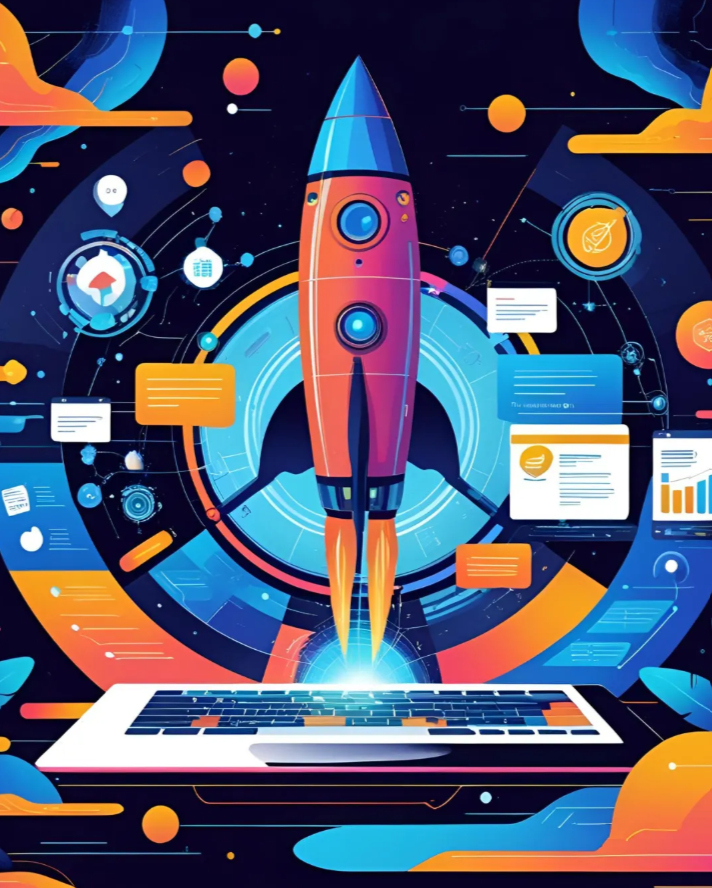Robotics in 2024: The Dawn of a New Era in Physical AI Agents
- GSD Venture Studios

- Dec 28, 2023
- 3 min read
Updated: May 26, 2024

2024 stands as a pivotal year in the realm of technology, particularly in the field of robotics. While Large Language Models (LLMs) have been the center of attention in recent years, it’s time to shift our focus to something even more groundbreaking: Robotics. This year marks the beginning of a significant shift, bringing us closer to the “ChatGPT moment” for physical AI agents, a point where robotics is expected to make an equally transformative impact as LLMs have in the digital space.
Breaking the Curse of Moravec’s Paradox
Moravec’s paradox has long plagued the field of AI and robotics. This paradox highlights a counterintuitive phenomenon: tasks that are simple for humans are often incredibly challenging for robots, and vice versa. However, 2024 is set to be remembered as the year the AI community begins to turn the tide against this longstanding challenge. Though the victory against this paradox won’t be immediate, significant strides are being made towards overcoming it.
The Future Foundations of Robotics in 2023
Last year, we witnessed the emergence of several foundational models and platforms that are setting the stage for this robotic revolution:
1. Multimodal LLMs with Physical I/O Devices
Projects like VIMA, PerAct, RvT (NVIDIA), RT-1, RT-2, PaLM-E (Google), RoboCat (DeepMind), and Octo (collaboration between Berkeley, Stanford, CMU) have integrated LLMs with robotic arms, allowing for a more interactive and physical representation of AI capabilities.
2. Bridging High-Level Reasoning with Low-Level Control
Innovations such as Eureka (NVIDIA) and Code as Policies (Google) are finding ways to connect high-level cognitive processing (typical of LLMs) with the more instinctual, reflexive actions required in robotics.
3. Advances in Robust Hardware
The development of robust hardware is key to advancing robotics. Notable examples include Tesla Optimus, Figure, 1X, Apptronik, Sanctuary, and collaborations between Agility and Amazon, as well as Unitree.
4. The Evolution of Data in Robotics
Data, a critical component in robotics, has seen significant progress. The research community is rallying to create comprehensive datasets like Open X-Embodiment (RT-X), which, while still in nascent stages, is a crucial step forward.
5. The Role of Simulation and Synthetic Data
Simulation and synthetic data are becoming indispensable tools in overcoming challenges in robotics, particularly regarding dexterity and computer vision.
a. NVIDIA Isaac’s Simulation Capabilities
NVIDIA Isaac can simulate reality at a speed 1000 times faster than real-time, providing an exponentially growing stream of data.
b. Hardware-Accelerated Raytracing for Photorealism
This technology not only enhances realism in simulations but also provides valuable data annotations, such as segmentation, depth, and 3D pose.
c. Data Multiplication through Simulators
Tools like MimicGen (NVIDIA) are revolutionizing how we approach data in robotics, significantly reducing the need for costly human demonstrations by augmenting real-world data.
Conclusion: A Future Shaped by Robotics
As we journey through 2024, the field of robotics is poised to reshape our world in ways we are just beginning to comprehend. The integration of advanced AI models with physical agents, the bridging of cognitive reasoning with motor control, and the leap forward in data and simulation technologies are setting the stage for a future where robotics and AI not only coexist but thrive together. The advancements in this year alone will not only combat the limitations set by Moravec’s paradox but will also lay the groundwork for a future where robots are an integral part of our daily lives, contributing to various sectors from industry to personal assistance. The robotics revolution is not just coming — it’s here, and 2024 will be remembered as the year it truly took flight.
Originally published in Medium




Plugging into the Chicago content scene with the right tools is great—but success also hinges on how you allocate your team’s time, budget, and creative energy. That’s where resource optimization really matters: it covers techniques like resource leveling and smoothing to balance workloads, prevent bottlenecks, and ensure consistent content output. By adopting these best practices, agencies can scale operations smoothly, maintain quality across campaigns, and stay agile in a fast-paced market (epicflow.com).
Bridging architecture theory with practical AI innovation, it's crucial to understand how intelligent systems can augment software delivery. The guide Agentic AI vs. Generative AI: Key Differences and Business Benefits highlights how agentic AI not only generates content but also autonomously makes decisions, orchestrates workflows, and adapts over time—unlike generative AI which is primarily creative (devcom.com). Embracing both approaches can help teams design smarter, self-improving systems in software architecture.